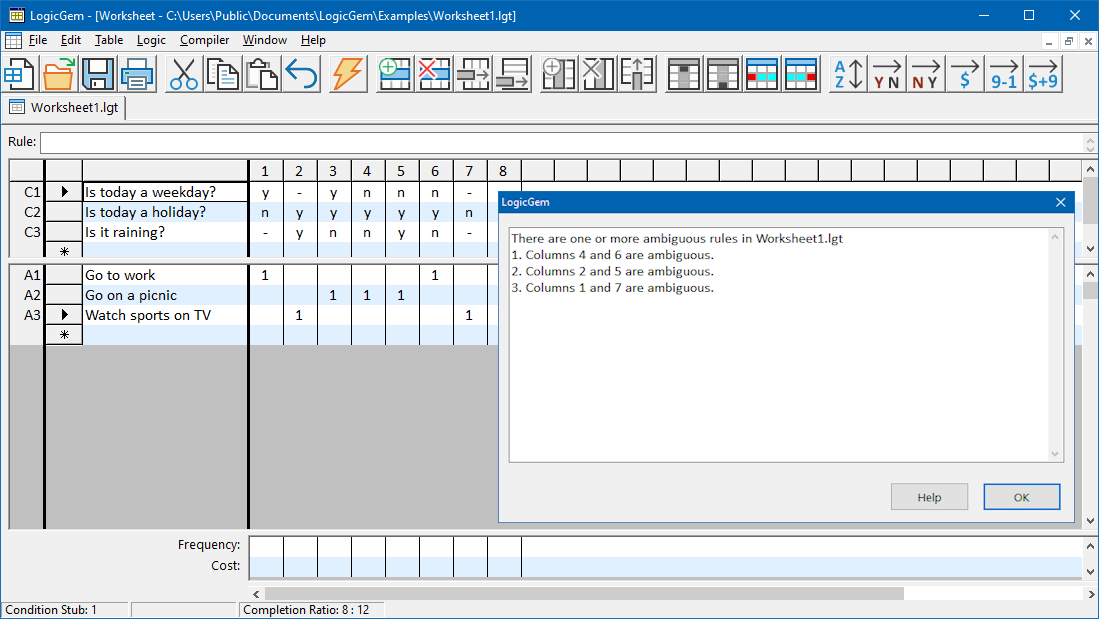
Ambiguity Check is a logic engineering tool used to determine whether a reduced table has contradictory and/or redundancy errors. Ambiguity Check identifies pair wise all the ambiguous rules in a faulty logic table. It is worth to note here the precise meaning of logic ambiguity. Two complex rules are ambiguous if the two sets of simple rules into which they can be decomposed share at least one common element. Consider the following two cases:
Case 1: Two simple rules are ambiguous (redundant) if they are copies of each other.
Case 2: Two simple rules are ambiguous (contradictory) if their condition entries are copies of each other, but their action entries are different.
The following shows an example of a logic table with a number of logic errors. Using the Ambiguity Check tool, we see that rules 5 and 6 were found to be ambiguous. In this case, Case 2 above applies and the rules are contradictory since C1, C2, and C3 for Rules 5 and 6 are the same, but Rule 5's action is A2 while Rule 6's action is A1.
